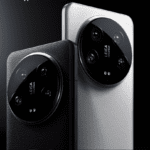Your cart is currently empty!
After looking for camera quality, users are increasingly becoming conscious of the audio experience their smartphones and other smart devices can deliver impacting their buying decision. In smartphones audio experience has become 2nd factor just after camera quality impacting the buying decision.
Camera is one such addon to the smartphones, and now other smart devices wherever it makes sense like Laptops, Tablets, etc., which has taken the centre stage and is numero uno feature that user try to know about while looking for a new device. The industry has also responded to this changing behaviour proactively and kept on improving the performance of the camera to perform many functions for users. For instance, in smartphones, be it simply becoming omni content creators by clicking pictures to capture their moments of life, scanning important documents adding to the productivity, taking pictures of screens in meetings and conferences to have real-time MoM, or adding biometric security to make smartphones additionally secure which otherwise give access to the personality of its owner; cameras are just adding to the capabilities of what all a smartphone can do. The chipset ecosystem has also been investing millions of dollars to create powerful chipsets which can do a lot of image processing through AI adding further to the capabilities.
Increasingly over the time, ‘con-calls’ or simply ‘calls’ have become essential to everyone’s job. If we look back at the pre-covid times, there were very few industries where calls were a routine thing. Today, even the government sector, which is considered a laggard in adoption of non-legacy processes and systems primarily driven by technology, also has several calls. I remember, it used to be a news when the then CM of Andhra Pradesh, Mr N Chandrababu Naidu would do daily ‘concall’ with the DMs of the state. It was a transformation in the administration! Today, every government official does calls. So have many other sectors which were traditionally not so comfortable with it. Earlier, the calls would happen in sectors where the teams were spread and there were field and corporate teams who were required to come on calls for coordination and collaboration. Today, not just internal communication, but external client and business development interactions have moved on to calls. Even now things getting better considerably, many offices aren’t yet open to ‘guests’ so the engagement with clients, partners and vendors still remains virtual. Education sector is another area where effectively classrooms are nothing but a specialised format of calls.
With all this the audio quality of the smart devices has become a key parameter influencing their decision. Overall, across the smartphones, it has come from No 5 in deciding parameters to No 2 in the past 3 years.
Other than enhancing the productivity use cases of smart devices, audio has become very important for other use cases that consume a typical day of smart device users. Entertainment in the form of OTT video consumption as well as the gaming applications all require an immersive audio quality. The innovations in the video such as going from 2K to 4K and now 8K resolution must be complemented by an equally clear and reverberating audio. What is the fun of otherwise having great video experience without equally great audio?
The covid-19 pandemic has indeed changed the way users are increasingly seeing at their smart devices. Earlier the earpiece and mic of a smartphones was all users were bothered about. But now speakers have become equally important. Its not always that users will use TWS and other headphones to hear. In smart TVs the expectation is even higher and grows proportionate to the screen sizes. The era of 32-inch smart TVs is fast going away, and people are buying bigger size smart TVs for that immersive experience, which is incomplete without great audio.
As consumers are busy buying for #Diwali they shouldn’t be looking for smart devices which only make great visuals without matching audio experience. Afterall that is what makes the experience immersive.




